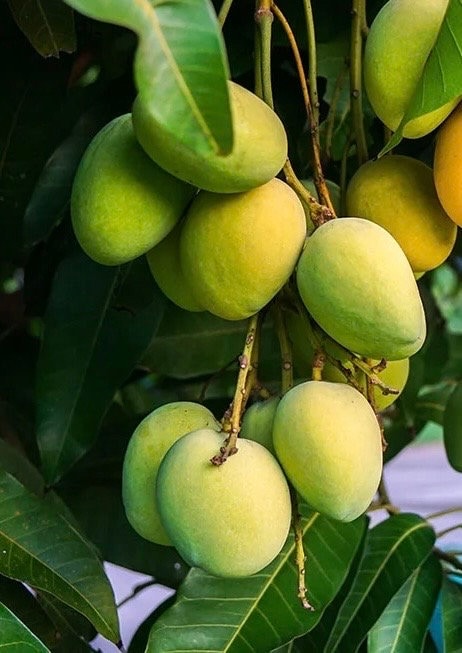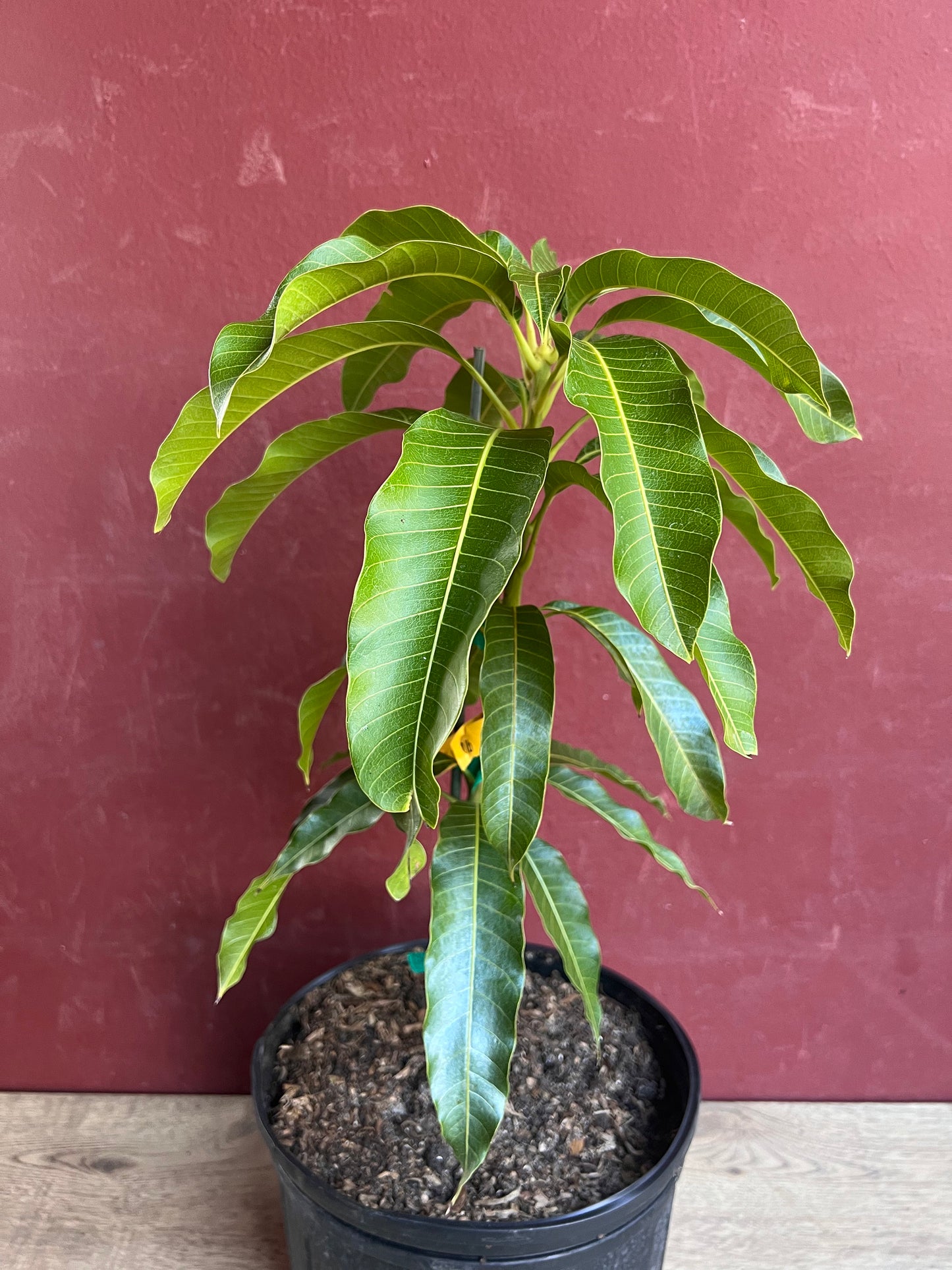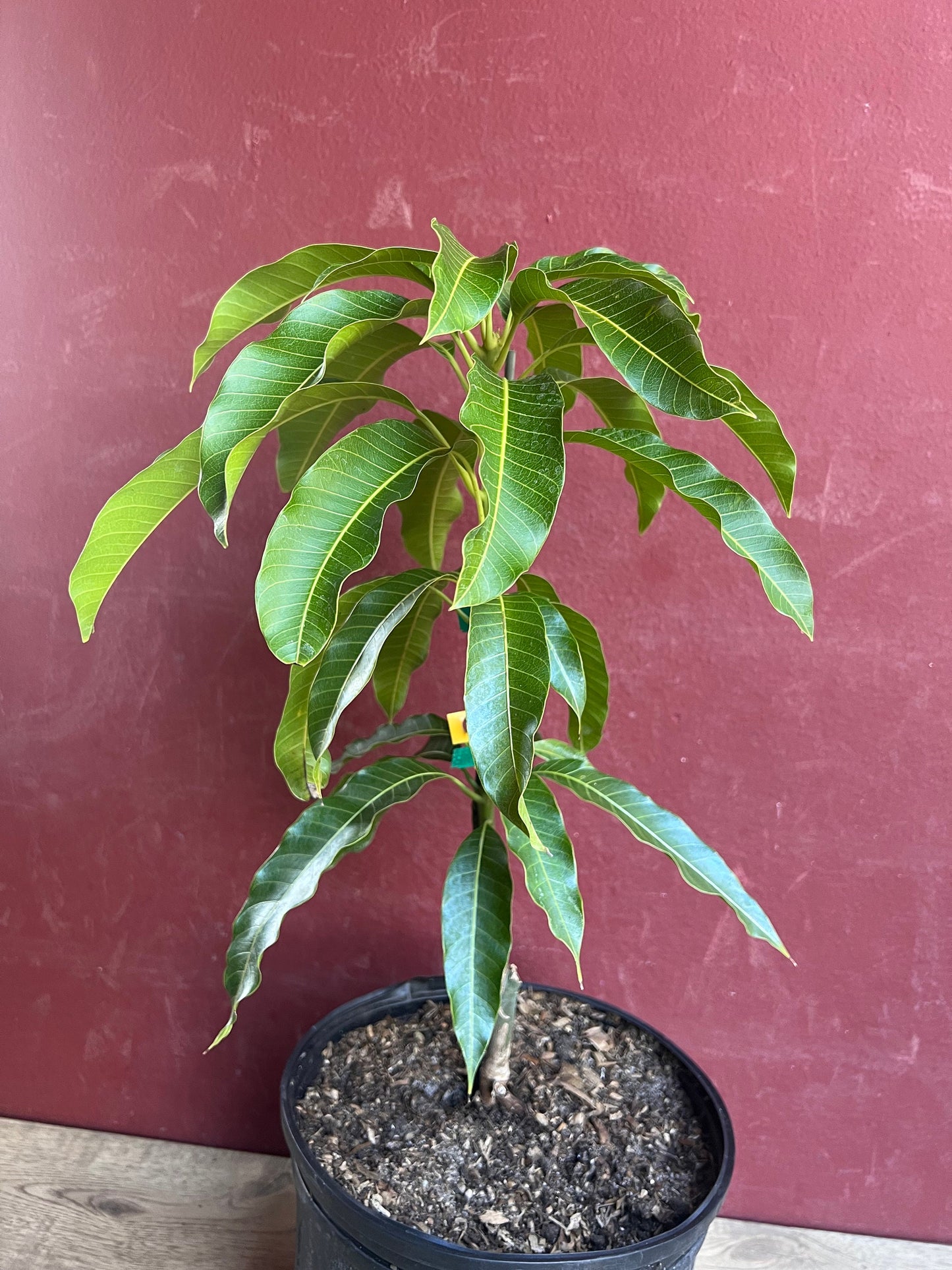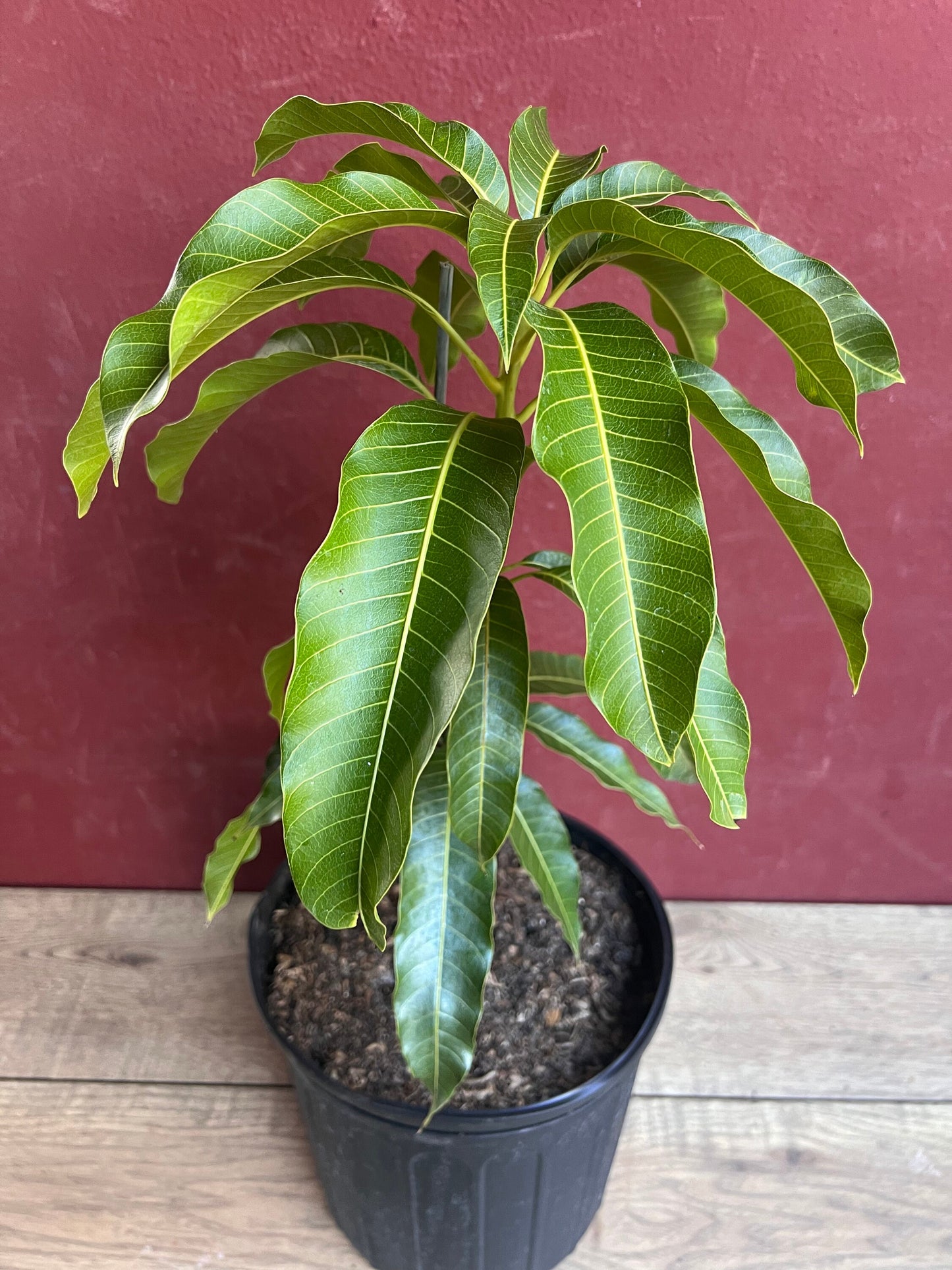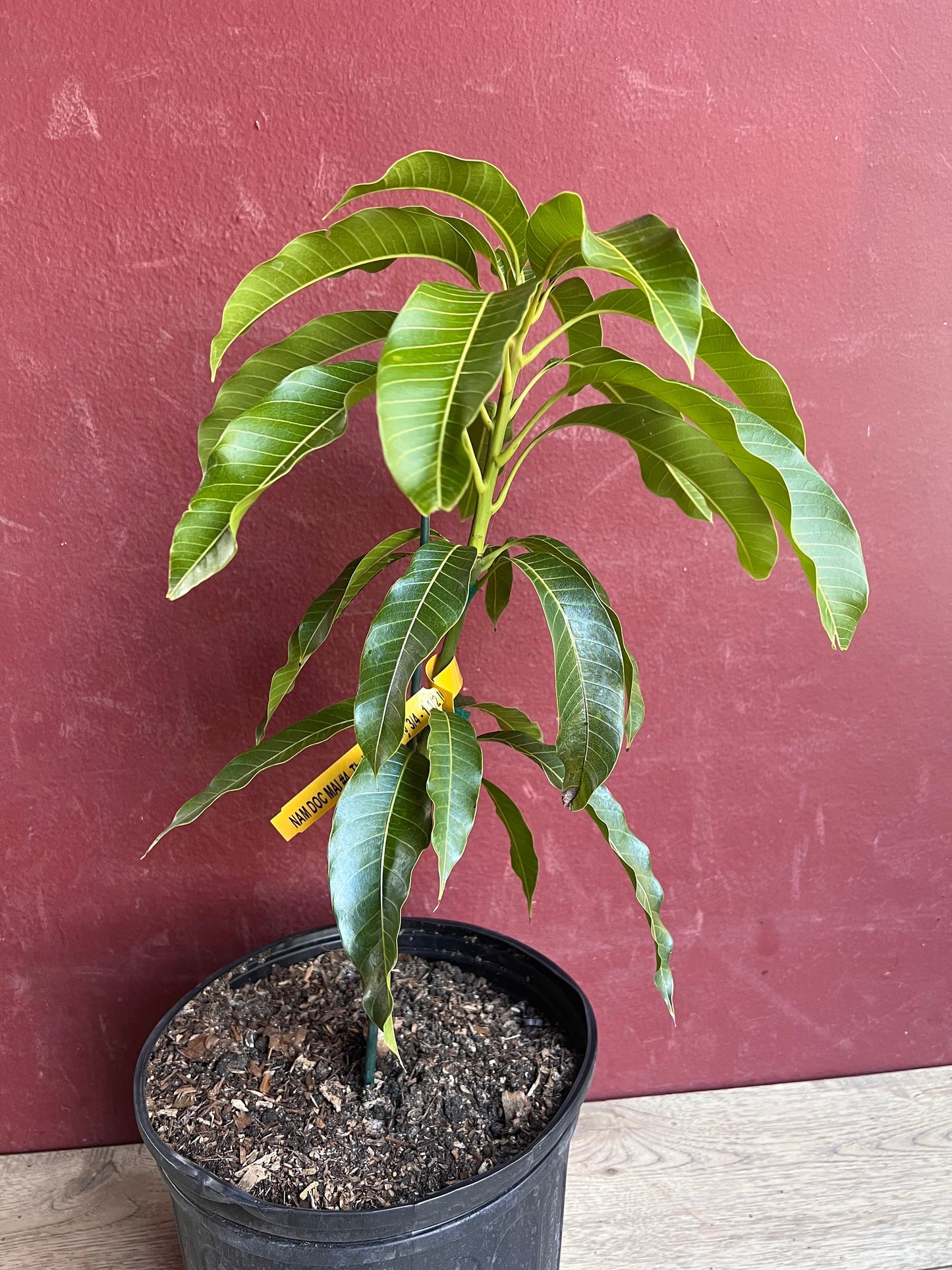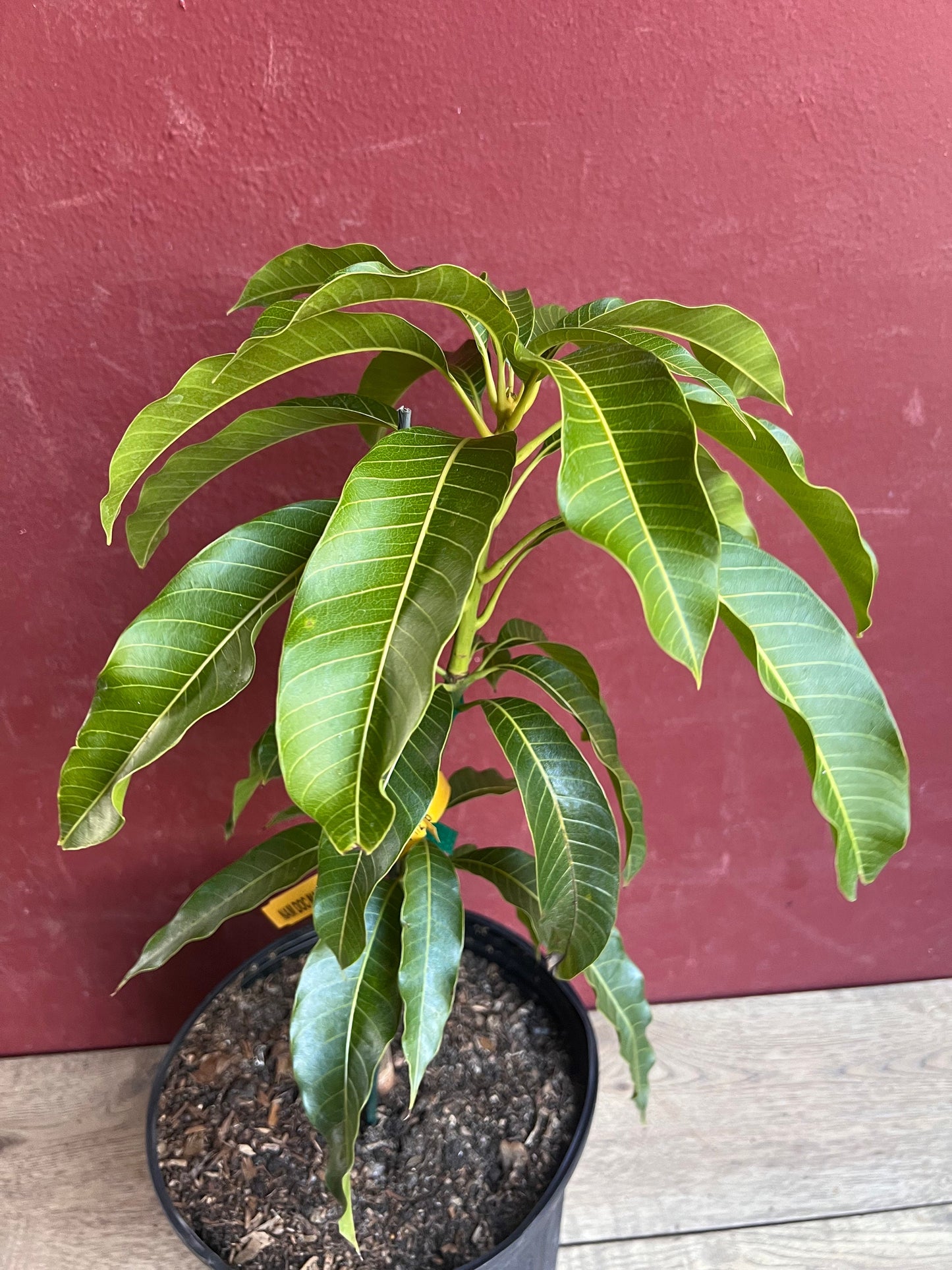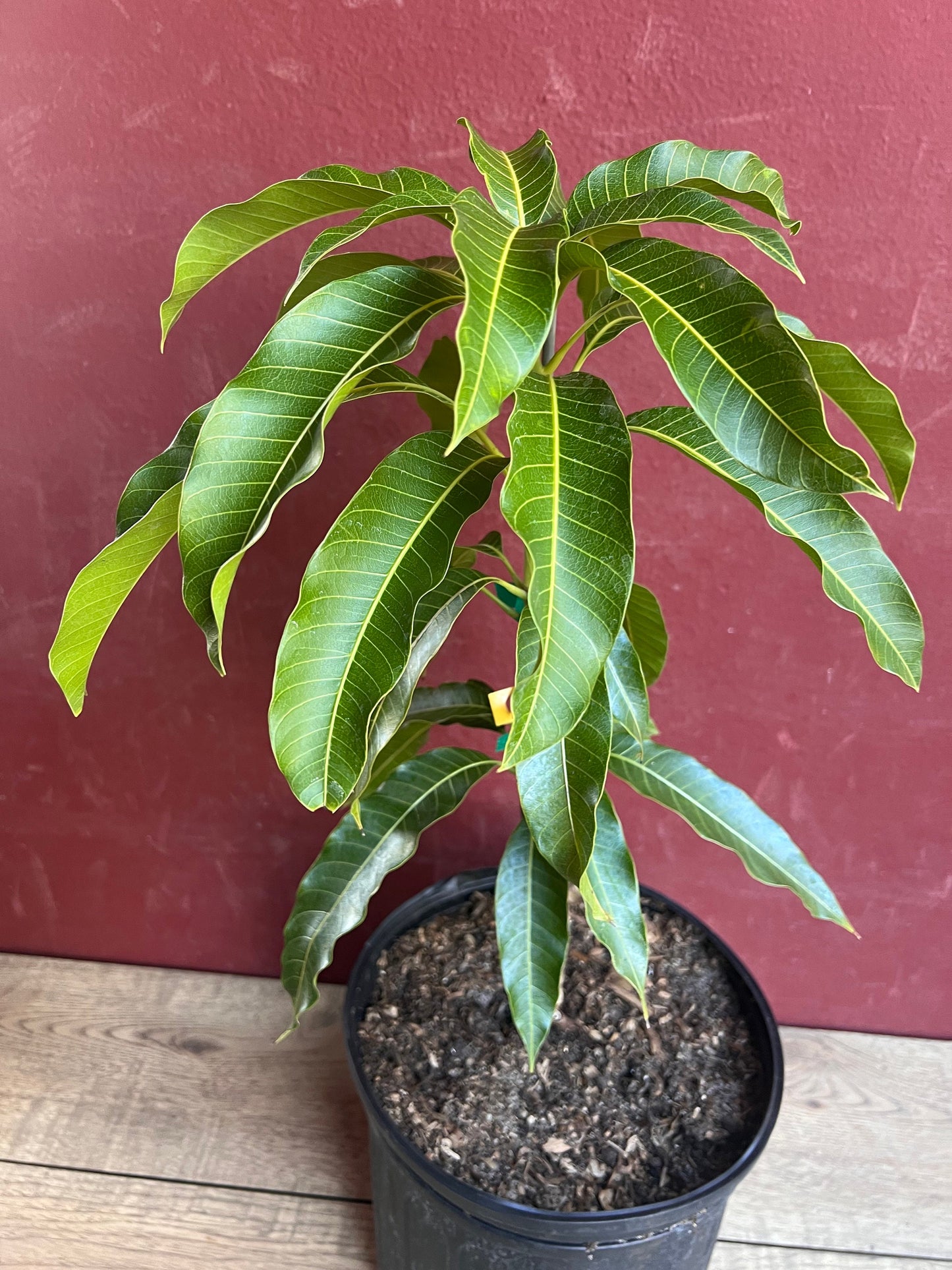Kesar Mango Tree, grafted in 3 gallons pot, Gujarat Mango, No Ship to CA and HI
Kesar Mango Tree, grafted in 3 gallons pot, Gujarat Mango, No Ship to CA and HI
Couldn't load pickup availability
You will receive one Kesar Mango Tree in a 3-Gallon Pot, similar to the pictures.
About the Plant
The Kesar Mango is a highly popular and prized mango variety known for its aromatic flavor, juicy sweetness, and smooth, non-fibrous texture. Often referred to as the "queen of mangoes" in India, Kesar is recognized for its bright orange skin, golden-yellow pulp, and unique blend of peach, apricot, and citrus flavors.
This medium-sized mango is commonly used in desserts, smoothies, and traditional Indian recipes like mango kulfi. Kesar mango trees are known for their early fruiting, high yield, and ability to thrive in sunny, warm climates with proper care.
Light Requirements
- Full Sun: Kesar Mango trees need 8–10 hours of direct sunlight daily to support healthy growth and sweet fruit production.
- Indoor Care: If growing indoors, place the tree near a south-facing window or use grow lights to supplement sunlight.
Watering
- Consistent Watering: Water when the top 1–2 inches of soil feel dry, ensuring the water reaches the root system evenly.
- Drainage is Essential: Avoid overwatering by ensuring the soil drains well. If in a container, use pots with proper drainage holes.
- Winter Watering: Reduce the frequency of watering during cooler months or periods of dormancy.
Soil Requirements
- Well-Draining Loamy Soil: Kesar Mango trees prefer slightly acidic to neutral soil (pH 5.5–7.5) that retains moisture without becoming overly wet.
- Avoid Clay Soil: Clay retains excess moisture, which can lead to root rot. Improve drainage by adding sand, perlite, or organic matter.
Temperature & Humidity
- Optimal Temperature: Kesar Mango thrives in warm climates (75°F to 95°F or 24°C to 35°C) and cannot tolerate frost.
- Humidity: Prefers moderate humidity but can adapt to drier conditions. Ensure proper air circulation to prevent fungal diseases.
Fertilizing
-
During Growing Season (Spring & Summer): Apply a balanced, slow-release fertilizer every 4–6 weeks.
- Use high-nitrogen fertilizer to promote lush foliage.
- Use potassium-rich fertilizer during fruit production to support bloom and sweet mango growth.
- Winter Care: Reduce the frequency of fertilization during the dormant months.
Pruning & Maintenance
- Light Pruning: Remove dead or damaged branches to maintain air circulation and tree shape.
- Avoid Heavy Pruning: Excessive pruning can reduce fruit production. Prune after harvesting or in early spring.
Pests & Diseases
- Common Pests: Aphids, Mealybugs, Scale Insects, Mango Weevils. Treat with insecticidal soap or neem oil.
- Fungal Diseases: Powdery Mildew & Anthracnose can be prevented by ensuring good air circulation and avoiding overwatering.
- Root Rot: Caused by poor drainage or overwatering. Always ensure well-draining soil.
Pollination & Fruit Production
- Self-Pollinating: Kesar Mango trees can self-pollinate but will benefit from insect cross-pollination (e.g., bees) to improve yields.
- Flowering & Fruit Production: Trees typically flower in spring and mature their fruit during the summer.
- Thinning Fruit: If too many mangoes set, thinning can improve the size and sweetness of the remaining fruits while easing strain on the tree.
Repotting (Container-Grown Trees)
- Repot Every 1–2 Years: Refresh the soil and provide adequate space for root growth by selecting a pot 1–2 inches larger in diameter when repotting.
- Use Well-Draining Soil: Choose a high-quality mix suitable for citrus and fruit trees.
Harvesting
- When to Harvest: Kesar mangoes ripen from late spring to early summer. They’ll turn a bright yellow-orange when ripe and yield to gentle pressure while emitting a sweet, fragrant aroma.
- Harvest with Care: Use sharp pruning shears or a knife to cut the mango, leaving a small portion of the stem attached to prevent bruising.
Kesar Mango trees are easy to care for when provided with full sun, well-draining soil, regular watering, and occasional light pruning and fertilizing. With proper attention to temperature, humidity, and pest management, these trees can thrive and reward you with their sweet, aromatic mangoes—perfect for fresh eating or traditional desserts.
Share
